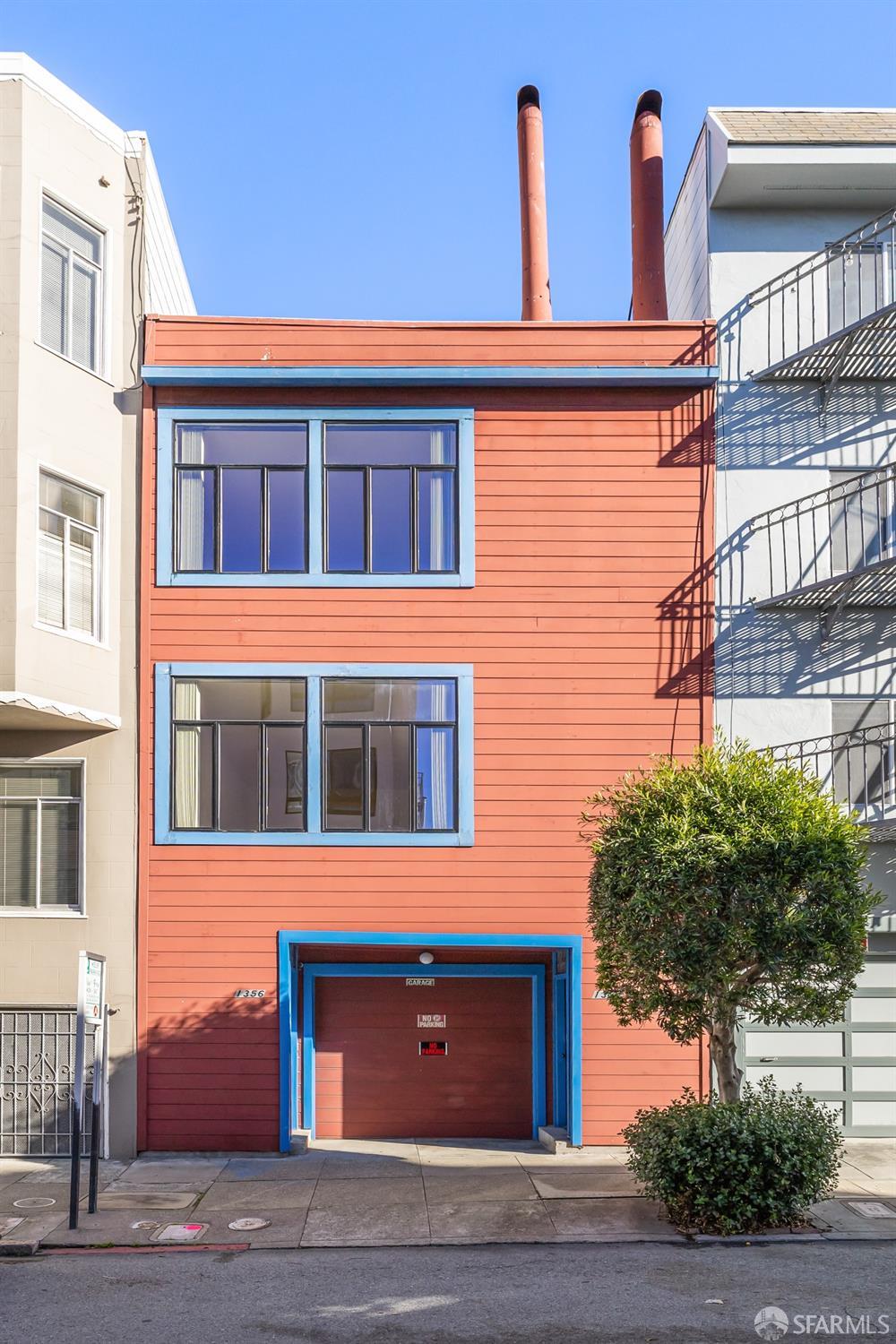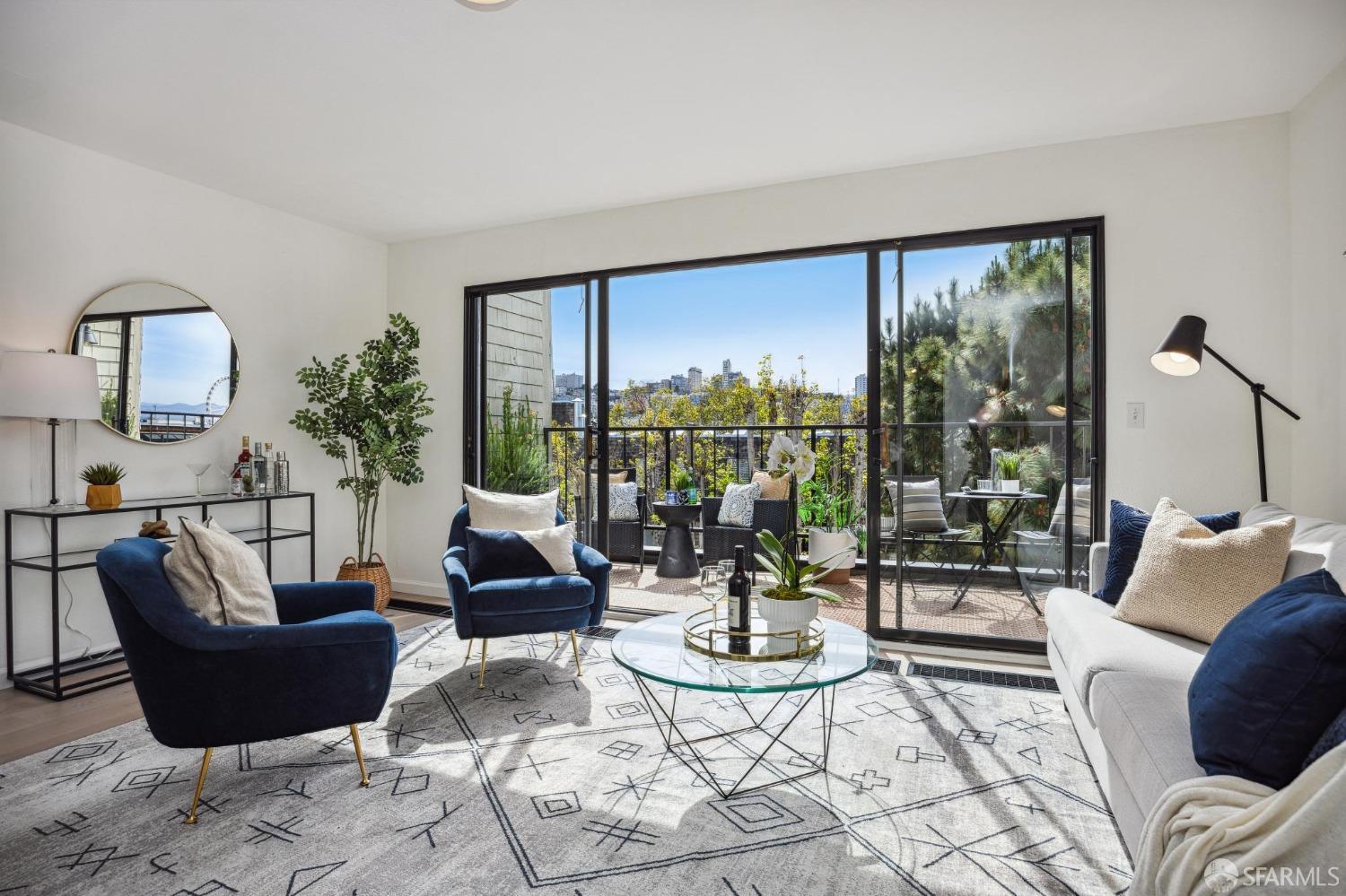TELEGRAPH HILL
Dominated by Coit Tower, TELEGRAPH HILL is a quiet cluster of hill-hugging homes with breathtaking views. The most direct path up the hill is Filbert Street, a very steep climb past clapboard houses and flowery gardens up to Telegraph Hill Boulevard. One alternative is to drive, but there’s only a handful of parking spots atop the hill, and the wait for a place can verge on the eternal. You could catch the infallibly infrequent Muni bus #39 to the top, but the ten-minute walk up is faster – if tiring – and allows you to drink in the panorama of North Beach and the bay below.
Once atop the hill, it’s easy to see why it was used as a signal tower for ships entering the Golden Gate. A watchman atop the hill would identify the boat’s origin and name via the flags flying on the mast, and relay the information via telegraph to the docks along Fisherman’s Wharf. A plaque in front of a statue honoring Christopher Columbus in Pioneer Park, which lies at the foot of the tower, marks the watchman’s spot.
Within Pioneer Park, and the best viewpoint in all of Telegraph Hill, is Coit Tower (daily 10am–6pm; $3.75), a 212-ft pillar bequeathed to the city by Lillie Coit. While waiting to ascend to the top, take some time to admire the murals at the interior’s base, site of a WPA project that employed artists to decorate public and government buildings. Students of famed Mexican muralist Diego Rivera – known for his links with Russian Communists – were selected to adorn the tower’s entranceway with frescoes.
Though the paintings are thematically linked, the styles vary greatly. One section depicts muscle-bound Californians working on the land; another shows a man reading Marx in front of a wall of books written by left-leaning authors like Upton Sinclair and Jack London; still others contemplate apocalyptic newspaper headlines. The murals were completed in 1934, during a longshoreman’s dispute that escalated into a general strike after police killed two demonstrators. When rumors about the “subversive” frescoes reached the authorities, the Art Commission ordered that a hammer and sickle be removed from one and even tried to close the tower until tempers cooled. A picket of the tower was mounted by local unions, keeping it in the headlines until authorities caved in and allowed the exhibit to open several months later. You can take a free tour of the murals Tuesdays and Thursdays at 10.15am and Saturday at 11am.
Descending Telegraph Hill on the eastern side, the beautifully landscaped Greenwich Steps, which cling to the hill at a 45-degree angle, and the equally lovely Filbert Steps, which drop down even more steeply, pass glitzy homes and gardens looking out over the Bay Bridge before plateauing at Montgomery Street. Filbert Street gives access to narrow footpaths like Darell Place and Napier Lane that cut off to either side; Napier Lane is one of the last boardwalk streets in the city, lined with bucolic cottages and overflowing greenery.
Backtrack to Montgomery Street to check out the fine Art Moderne apartment building at no. 1360 in which Lauren Bacall lived in the classic Bogart and Bacall film Dark Passage. Off Montgomery, at 60-62 Alta Street, you’ll find the former home of Armistead Maupin, who penned much of the Tales of the City here; begun as a column in the San Francisco Chronicle, the book did much to preserve San Francisco’s reputation as a capital of free expression.
Back at the foot of Greenwich Street, head east to Levi Strauss Plaza, headquarters of blue-jean inventors Levi Strauss & Co, (hence the “SF” on the pocket rivets); an exhibit on blue-jean history and the company’s less successful products can be found inside the main building in the complex, but the allure of the plaza lies more in its lovely pond and park.
Lillie Hitchcock Coit
Lillie Hitchcock Coit (1844–1929) came to San Francisco at the age of seven only to lose some of her new friends in a series of city fires. Moved by her experiences, she helped the short-handed Knickerbocker Engine Company (No. 5 of the Volunteer Fire Department) tow its engine up Telegraph Hill one day. The grateful firefighters of the first engine to ever make it up the hill made Coit their mascot; she so relished the role that she embroidered the number five on her clothing and began signing her name with a five after it. Despite marrying wealthy Easterner Howard Coit in 1868, Lillie continued attending firemen’s balls and playing poker with “her” men of Company No. 5. Local stories abound of her exploits, including scenes of dashing away from society balls and chasing after clanging fire engines. What’s certain of her legacy, however, stands atop Telegraph Hill in the shape of the tower that was constructed after her 1929 death with the $125,000 she’d left “to be expended in an appropriate manner for the purpose of adding to the beauty of the city which I have always loved.” The result was a concrete tower, designed by Arthur Brown, architect of City Hall, that bears an unmistakeable resemblance to a firehose nozzle.


